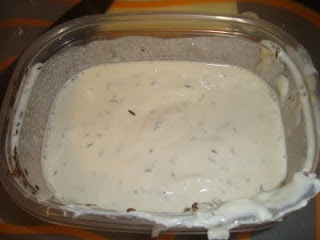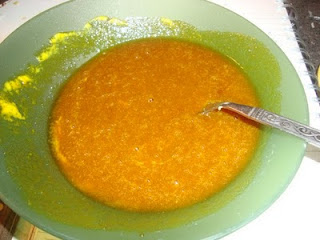I made myself a Daiquiri (p. 60). I shook light rum, lime juice, and sugar syrup together with ice, then strained them in to a chilled glass:

Odd. First, I don't really understand these drinks that have a couple ounces of liquid in the bottom of a glass. This drink was STRONG and way, way too sour for me. Plus I thought daiquiris usually had fruit involved. This daiquiri was fruit-free.
Josh's first drink was a Gin fizz (p. 56). I shook gin, lime juice, and sugar syrup (oddly, the exact same ingredients as the daiquiri, except for rum versus gin) with ice, poured it in to a glass, and then filled the glass with club soda:

Josh liked it. He thought the club soda really rounded out the flavor, nicely balancing the sweet and sour.
I made myself a Moscow mule (p. 58). I actually had completely forgotten about this drink and it took me quite a while to figure out what the heck it was. I poured vodka and lime juice in a highball glass (TJOC also recommends a mug [a mug?? Really??]), filling the glass with ginger beer.

I really don't like ginger beer. What a strange drink this was. It was like drinking a big glass of sour beer with a vodka chaser. I can't say I will sign on for this drink again.
I thought Josh would actually like a nice Cuba libre (p. 60). The drink was incredibly simple--rum, Coke, and lime juice poured over ice:

Josh was a big fan. It's essentially a rum and Coke with lime, so if that sounds good to you, order one the next time you go out.
These posts are really hard for me because how much can you say about a cocktail? I don't know how people write entire blogs about alcohol.
Random facts:
- Ginger beer peaked in popularity in the early nineteenth century and was seen as healthy due to ginger's reputation as a digestive aid (Oxford Companion to American Food and Drink, p. 259)
- Ginger beer seems to be alcoholic while ginger ale is not (personal observation)
- Some rum is fermented from molasses. (On Food and Cooking, p. 765). I totally did not know that
- A gin fizz becomes a "golden fizz" if you add an egg yolk (Wikipedia). I think that sounds repulsive
 Technorati Favorites">
Technorati Favorites">










































